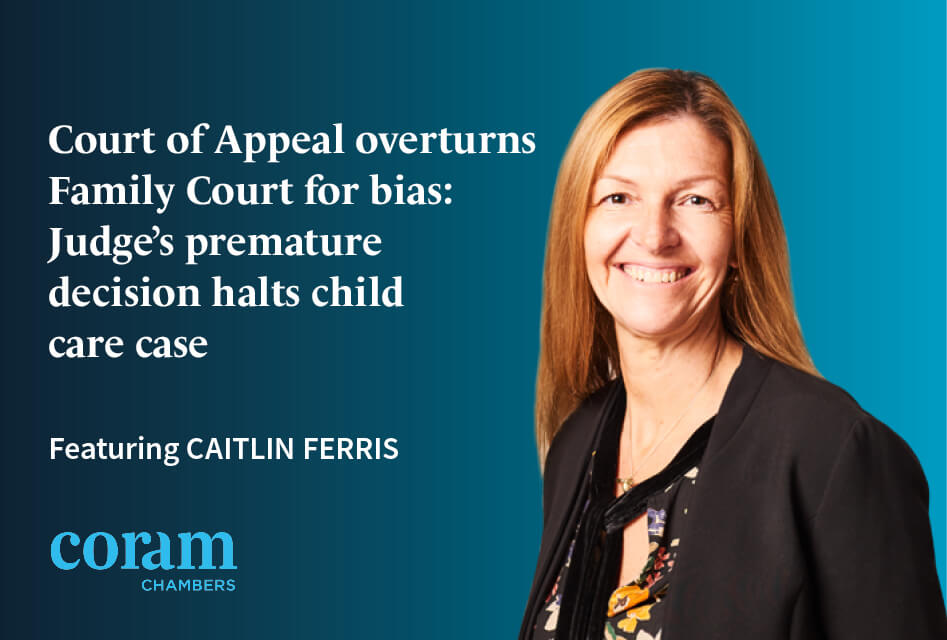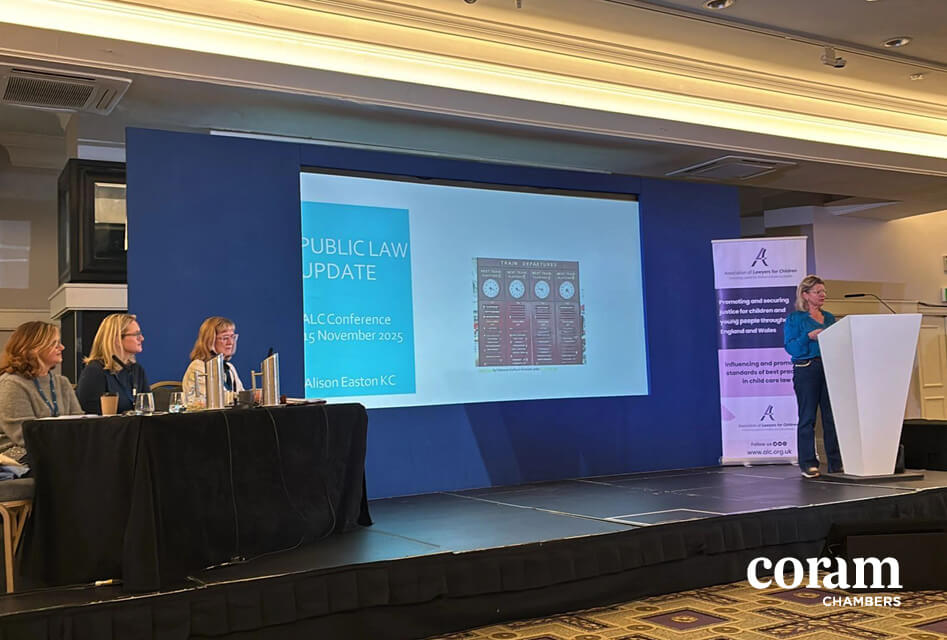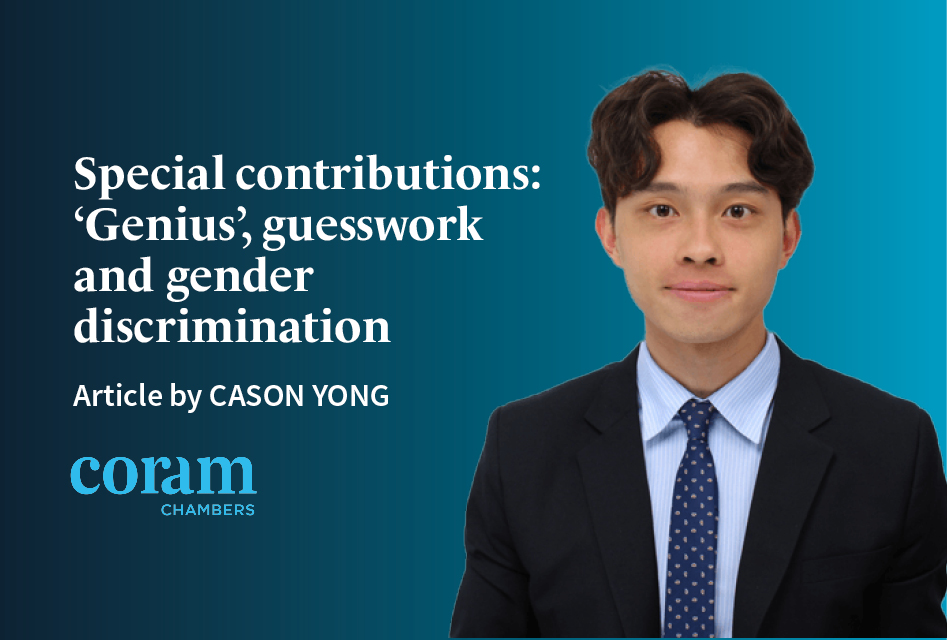The Divorce, Dissolution and Separation Act 2020 (‘DDSA 2020’) has landed, finally coming into force on 6th April, 2022.
Front and centre to the new legislation is the provision of no-fault divorce; a mechanism for divorce which, unsurprisingly, does not require the identification of fault on the part of any party. It’s worth noting that England and Wales has long lagged behind many other jurisdictions in this regard so this change in the law is, understandably, feted as a much needed development that is supposed by nearly all practitioners in family law.
Adrian Barnett-Thoung-Holland explains what precisely does it mean?
Fault Based Divorce
In times past (read: a matter of days ago), the law of England and Wales recognised only one ground for divorce; the irretrievable breakdown of a marriage. The problem was that proving irretrievable breakdown relied on five distinct facts; those were laid out in s.1(2) MCA 1973:
- The respondent has committed adultery and the petitioner finds it intolerable to live with the respondent.
- The respondent has behaved in such a way that the petitioner cannot reasonably be expected to live with the respondent.
- The respondent has deserted the petitioner for a continuous period of at least two years immediately preceding the presentation of the petition.
- The parties of the marriage have lived apart for a continuous period of at least two years immediately preceding the presentation of the petition.
- The parties to the marriage have lived apart for a continuous period of at least five years immediately preceding the presentation of the petition.
The first two have long been the infamous posterchildren for the concept of ‘fault’ in divorce proceedings; the Petitioner would need to prove that the Respondent had committed adultery or behaved unreasonably. If they can’t establish them and prove irretrievable breakdown, there can’t be a divorce.
The old procedure effectively allowed the Respondent to the divorce to defend the petition (the pleading which set out the factual basis of the divorce) and then force the courts into conducting a hearing, with evidence from the parties, to determine who was to blame.
The problems were obvious; if the Respondent drew issue with the fact pleaded as above, but still wanted to get divorced all the same, the court would be faced with the awful and frankly unnecessary method of determining who was ‘to blame’ for the breakdown of the marriage. That would necessitate inflammatory statements and evidence and, in the worst cases I have seen, encourage external family members and friends being introduced into the case to give evidence against one of the parties to the breakdown of the marriage. All of this adding unnecessary costs and time for lawyers and the parties as well as blocking out court time away from people who needed to have determination in comparably more urgent or serious matters in the family courts.
In a world where there is an increased focus across the family courts and among family lawyers for amicable resolution of disputes inside and outside of court, the old legislation presented an unhelpful mechanism through which more disputes were being aired, wasting valuable court time and cost to the parties. It boiled down to a simple query: ‘if you both want to get divorced anyway, why are you spending money on lawyers and litigation just to find out who was to blame?’
The need for a no fault based system was brought into stark relief by the case of Owens v Owens which was heard by the Supreme Court and detailed in a judgment on 25th July, 2018. My colleague, Georgina Rushworth has discussed this in her recent blog here and a contemporaneous article for Family Law Week here so I won’t retool the facts of the case here. Owens, in effect, restated the establishment of fault in order for one to obtain a divorce and without any proof of the same, no divorce. It also, however, pointed out the obvious flaws in the fault-based system that the existing legislation required.
All this precipitated the change we now have; there is now no longer a need to rely on any of the old factors laid out in the Matrimonial Causes Act 1973 and we have a no fault divorce procedure.
How Has the Law Changed?
First of all, note the changes in language; a staple of the family courts over the years. These changes are purely designed to do away with the archaic language of a bygone era:
Petitions are now Applications,
Decree Nisi is now Conditional Order
Decree Absolutes are now Final Orders and;
Decrees of Nullity are now Nullity of Marriage Orders.
We turn now to s.1 DDSA 2020 which establishes the procedure:
1(1) …either or both parties to a marriage may apply to the court for an order (‘a divorce order’) which dissolves the marriage on the ground that the marriage has broken down irretrievably.
The DDSA 2020 has now removed any idea of fault, so the factors I laid out above are all gone. Now, the only ground is irretrievable breakdown. Note the change – irretrievable breakdown was still the only ground in the old legislation but the difference is, a factual pleading on any of the above bases is now gone.
1(2) An application under subsection (1) must be accompanied by a statement by the applicant or applicants that the marriage has broken down irretrievably.
1(3) The court dealing with an application under subsection (1) must
- Take the statement to be conclusive evidence that the marriage has broken down irretrievably and
- Make a divorce order.
1(4) A divorce order:
(a) is, in the first instance, a conditional order, and
(b) may not be made final before the end of the period of 6 weeks from the making of the conditional order.
Evidence of irretrievable breakdown is then established by a statement establishing the grounds to that effect. There is no objective, legislative threshold of that break down as per the old law and the statement is assessed on its own value. This is important; previously, the law set an objective standard with measurements of what breakdown was. Without that, marriages that breakdown are assessed within their own relative setting.
1(5) The court may not make a conditional order unless—
(a) in the case of an application that is to proceed as an application by one party to the marriage only, that party has confirmed to the court that they wish the application to continue, or
(b) in the case of an application that is to proceed as an application by both parties to the marriage, those parties have confirmed to the court that they wish the application to continue;
and a party may not give confirmation for the purposes of this subsection before the end of the period of 20 weeks from the start of proceedings.
Once a petition is filed, a compulsory wait of 20 weeks is instituted until a conditional divorce order is granted. In practice that wait is probably going to be longer if there is a backlog. Thereafter it takes 6 weeks before that conditional order can become a full divorce order.
In addition, it’s now also possible to put in a joint petition; that is to say, both parties to the marriage, in agreement, can petition for divorce together. Previously this wasn’t available, as the parties effectively needed to reach an entente cordiale that the other wasn’t going to defend the petition (even if it contained spurious or provocative allegations on the basis of say, unreasonable behaviour). There is a minor hiccough there in that one solicitor may not represent both parties in respect of such a joint petition but the procedure is welcome. It extends now to married couples with no history of adultery, unreasonable behaviour or periods of separation who want to get divorced without having to blame one another; a mutual divorce.
The only bases available to dispute the application are limited to:
- Disputing the validity or subsistence of the marriage
- Disputing the jurisdiction to entertain proceedings
- Pending cross-applications for divorce
Nothing else can be regarded as a ‘defence’ to a divorce application; and you’ll notice these are all very specific and not related to the issue of fault at all but rather whether the court should give a divorce on a legal footing.
To note; the procedure also extends to judicial separation and dissolving civil partnerships as well; not just divorces for marriages.
Why is this a good change?
Aside from the reasons I laid out above, the changes are designed to allow people who want to get divorced to do so without establishing fault. Modern family lawyers are focussed on collaborative and amicable approaches to resolving disputes and the option of avoiding the fault aspect altogether reduces the acrimony and dispute between parties.
I have been involved in too many ‘defended’ divorces throughout my career and in nearly all of those cases, the Respondent wanted to get divorced but didn’t want to concede to the petition’s factual bases. In all of those which did not lead to compromise and agreement, we were forced into costly and pointless multi-day trials to litigate the issues of fault; to find someone to blame for the breakdown. But all the couples in those cases wanted to get divorced. Court time was being set aside for hearings about who had said/done/not said/not done what; even though they both wanted to be divorced. Money that could be put towards the parties’ children and/or themselves was being wasted on lawyers litigating factual issues which did not matter. What sense was there in stopping someone who didn’t want to be married from getting a divorce?
In some cases, proven perpetrators of domestic abuse were able to deny the petitioners the opportunity to divorce for months at a time by defending the petitions, allowing the perpetrators to trap the complainants in extended proceedings.
We should also not forget the impact this will have on contemporaneous proceedings – it is very rare that divorce proceedings stand alone without concerns arising about children or the distribution of the parties’ finances after a divorce. The removal of fault prevents the parties getting into the habit of arguing over issues or blaming one another; this can assist the parties in focusing on amicable relations during discussions or proceedings over their finances and/or their children.
What does this mean for the courts?
I have routinely said that we are now reaching a ‘bottleneck’ in the family court; the traffic jam between cases that have been plodding on for years prior to COVID and the pandemic and those which were issued during it. The Family Courts are already overloaded with cases. Removing the headache of contested divorce hearings will loosen up those gaps, giving time and energy towards matters which deal with more urgent issues.
What does this mean for a couple’s financial arrangements and arrangements for children?
In terms of the financial orders, the procedures remain partly unclear and partly unchanged. The intention at the moment seems to be that when a conditional order application is pending, the parties would obviously be encouraged to reach agreement on their financial arrangements before the 20 weeks is up – that could be through the usual procedure (Form A, etc.) or else achieved through alternative dispute resolution (mediation, arbitration, etc.).
At the moment, the old petitions required you to indicate (as petitioner) whether or not you would be seeking for financial remedies; that in itself doesn’t automatically cause financial remedies to commence.
Arrangements for children would typically be the same as they ever have; usually through the C100 and applications for Child Arrangements Orders. As ever, the circumstances of arrangements for children are usually disconnected from both divorce proceedings and financial remedy proceedings.
Coram Chamber’s barristers are leading experts in the field of Family Law and we are able to assist in advising on the no-fault procedure as well as offering alternative dispute resolution options to settle financial matters and dispute about children that can arise.


